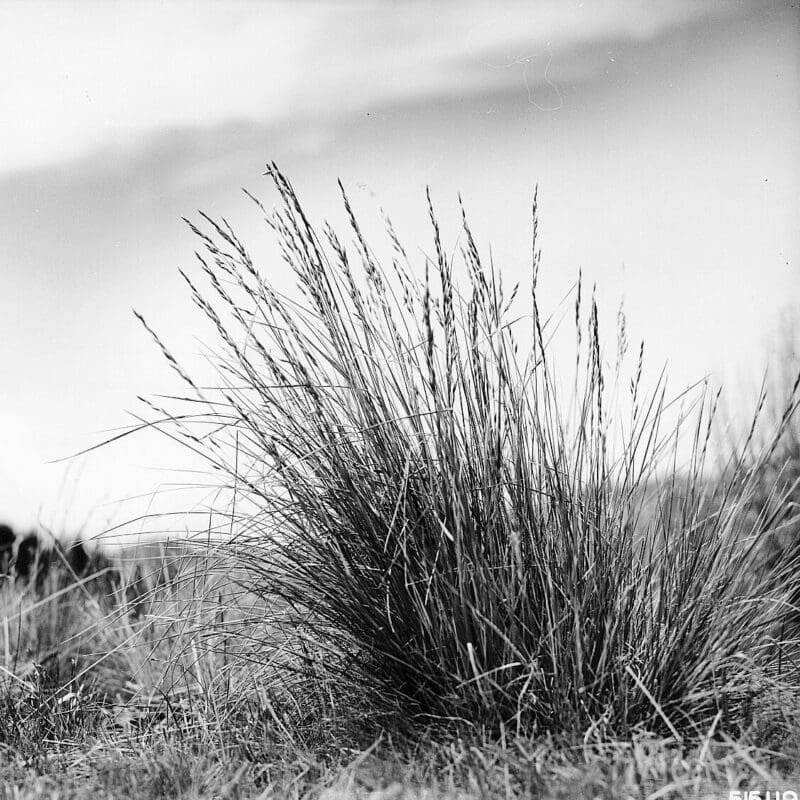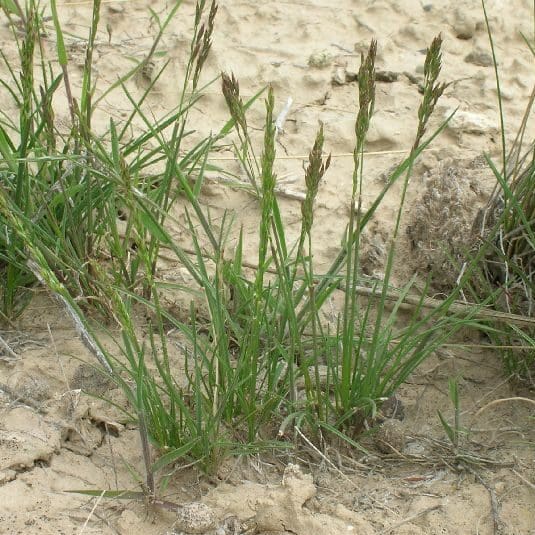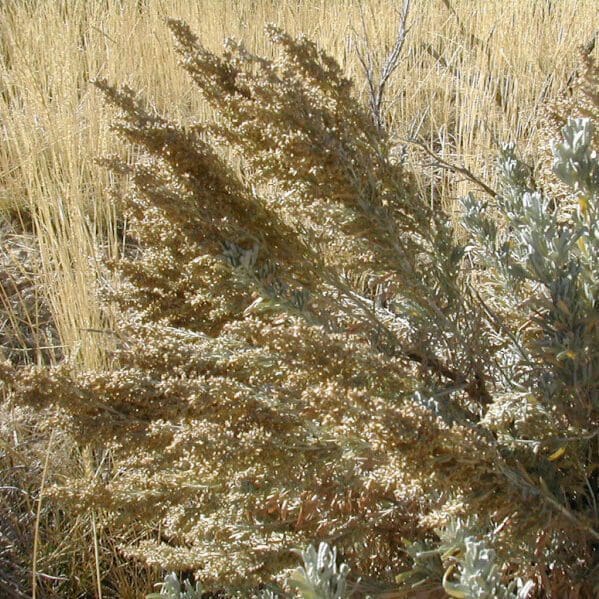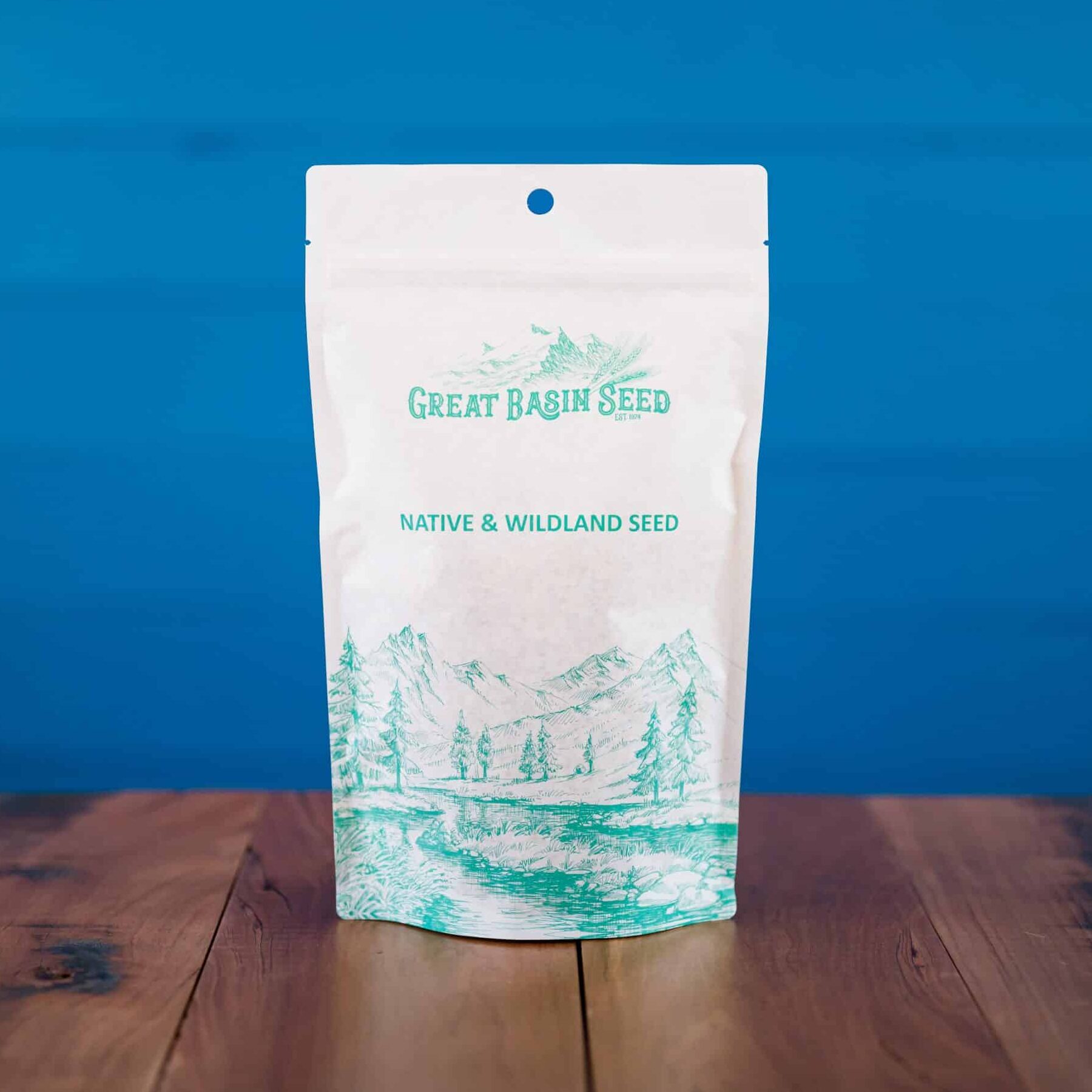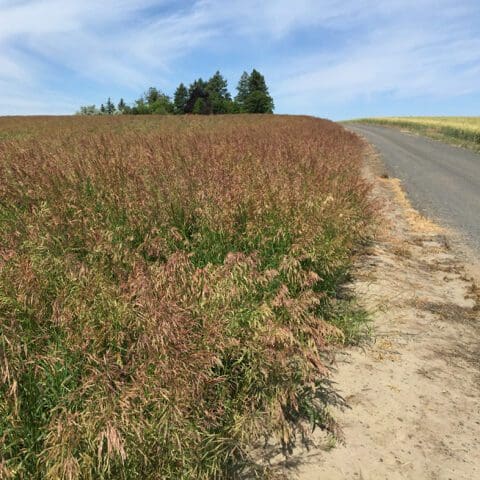Hard fescue (Festuca trachyphylla) is an introduced cool-season perennial bunchgrass. It is is long lived, persistent and competitive with other grasses and weeds. Hard fescue is native to forest edge habitats and open forests of Europe.
Hard Fescue is used for stabilizing roadsides and ditch banks, farm tree plantings, cover in orchards, weed suppression, campsites and recreational areas, fairways for golf courses, farm landing strips, runway shoulders, logging roads, skid trails, ski slopes, dryland lawns and as cover for retired cropland. It has been used for grazing, but usually more palatable grasses are preferred. It is commonly used as a low-growing turf. Mature stands are short-statured and have few seed heads, which makes this plant desirable for low- maintenance long-term cover. It is less drought tolerant than sheep fescue, but is an important erosion control species. It can attain a height of 30 inches when grown in good conditions. Compared to sheep fescue, it has more lax leaves that are longer, broader and coarser.
‘Durar’ Hard Fescue is more drought resistant than chewings fescue, but not as drought resistant as sheep or Idaho fescue. It is adapted to the 16 to 30 inch rainfall areas of Washington State, Oregon and Idaho. ‘Durar’ makes a tremendous root system, producing many more pounds of roots per acre than it does in top growth. Root samples taken from the top 8 inches of soil after 6 growing seasons showed ‘Durar’ with 6,000 pounds of roots per acre and crested wheatgrass with 3500 pounds of roots per acre. It produces up to 700 pounds of clean seed per acre. It is adapted to medium and fine textured soils that are well drained. Wet or saturated soils are not tolerated. It is somewhat shade tolerant.
Establishment
A firm, weed-free seedbed is highly recommended. The germinating seedlings are susceptible to soil crusting, so early spring seeding is essential. Seeding should be done with double disk drills with depth control so that seeding depth is no more than 1/4 inch. Early spring seedings work well when made in spring barley stubble.
Management
New seedings need protection the first year, so the seeded area should not be used or be subjected to traffic. Weed control is needed especially in the establishment year. Do not fertilize in the year of seeding because this generally results in heavy weed growth. Maintenance applications of fertilizer may be necessary in low fertility critical areas where the stand is stressed. Rotational use is recommended in heavy use areas, along with a maintenance application of fertilizer.
Over 90 cultivars of hard fescue have been released as of 2007, some of which are Plant Variety Protected. Many of these varieties are for turf and lawn use. Durar Hard Fescue was developed by re-selection from seed collected by Virgil Hawk in 1934 at the Eastern Oregon Livestock Experiment Station at Union, Oregon. It was released for commercial production in 1949.
Also known as Festuca trachyphylla, Festuca duriuscula and Festuca longifolia.
***Click on the “Quick Plant Facts” tab above for more information.
Hard Fescue NRCS Plant Guide and Fact Sheet
Hard Fescue NRCS Plant Guide and Fact Sheet
PDF version of NRCS Plant Guide and Fact Sheet
Prepared By: Wayne Crowder, USDA NRCS Plant Materials Center, Pullman, Washington
Species Coordinator: Mark Stannard, USDA NRCS Plant Materials Center, Pullman, Washington
Helpful Links
Additional information about this product can be found on the academic websites linked below.
Synonyms
Many plants have more than one common and scientific name. We've listed a few of them below.
- Hard Fescue
- Festuca ovina
- Festuca duriuscula
- Festuca trachyphylla
- Festuca brevipila
- Festuca stricta
- Festuca longifolia.
Quick Plant Facts
| Common Name: | Hard Fescue |
|---|---|
| Scientific Name: | |
| Available Varieties: | |
| Lifespan: | |
| Root Form | Bunchgrass |
| Zone Map | comingsoon.gif |
| Min. Precipitation | 12 – 14 Inches Minimum |
| Best SowingTime | Spring or Fall |
| Plant PDF File | fetr.pdf |
| Sowing Rate | 3-6 PLS lbs. per Acre |
| Seed Count | 565,000 per pound |
| Growth Height: | |
| Plant Type: | |
| Planting Rate: | |
| Origin: | |
| Best Time to Sow: | |
| Max Sowing Depth: | |
| Growth Season: | |
| Sun & Shade Tolerance: | Low Shade Tolerance, Full Sun |
| Elevation of Occurance: | |
| Hardiness Zones: |

